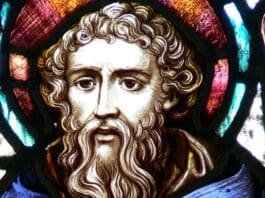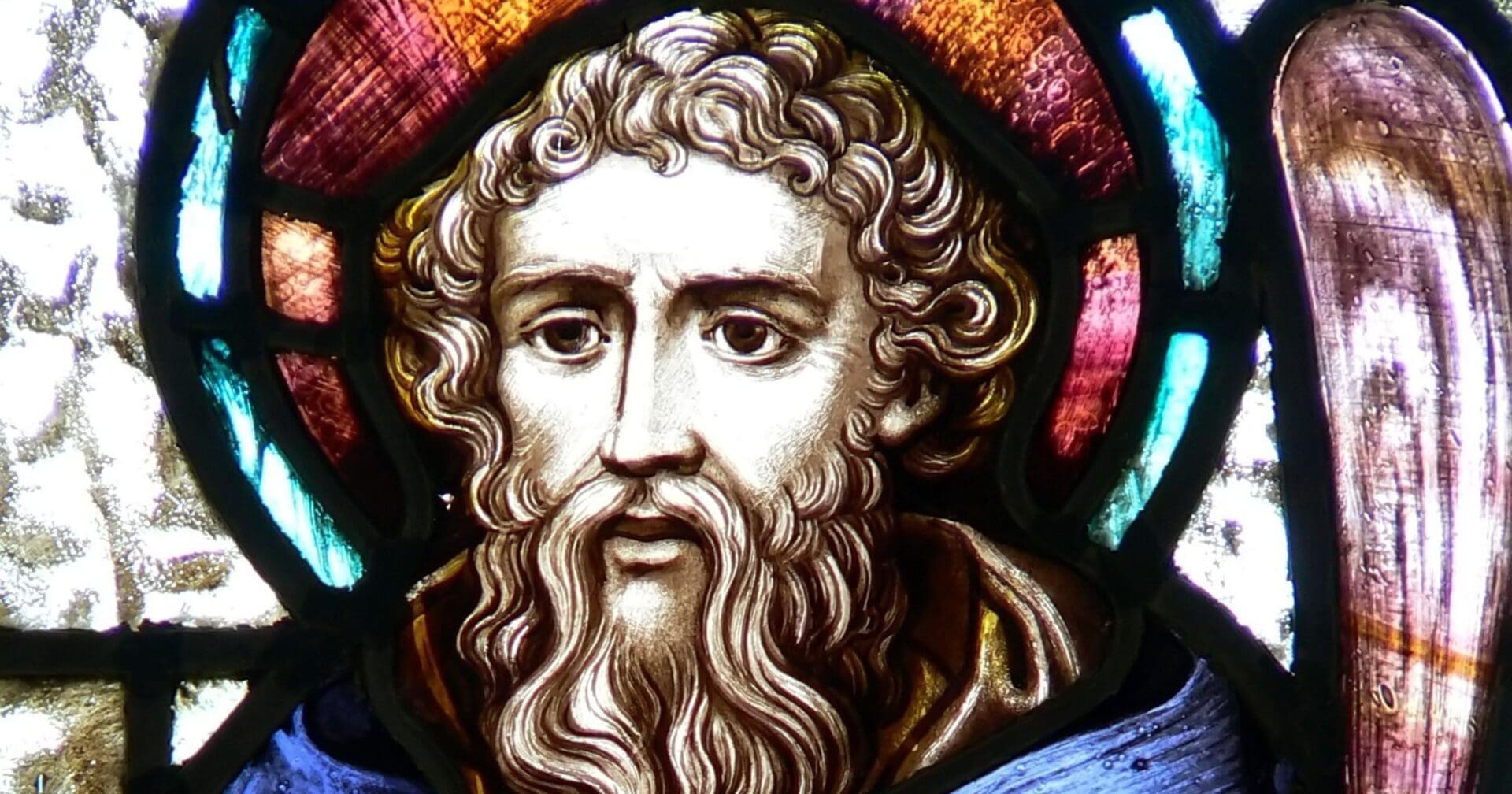
Saint Brendan of Ardfert and Clonfert, known also as Brendan the Voyager, was born in Ciarraighe Luachra, near the present city of Tralee, County Kerry, Ireland, in 484; he died at Enachduin, now Annaghdown, in 577. He was baptized at Tubrid, near Ardfert, by Bishop Erc. For five years he was educated under St. Ita, “the Brigid of Munster”, and he completed his studies under St. Erc, who ordained him priest in 512. Between the years 512 and 530 St. Brendan built monastic cells at Ardfert, and at Shanakeel or Baalynevinoorach, at the foot of Brandon Hill. It was from here that he set out on his famous voyage for the Land of Delight.
St. Brendan belongs to that glorious period in the history of Ireland when the island in the first glow of its conversion to Christianity sent forth its earliest messengers of the Faith to the continent and to the regions of the sea. It is, therefore, perhaps possible that the legends, current in the ninth and committed to writing in the eleventh century, have for foundation an actual sea-voyage the destination of which cannot however be determined.
These adventures were called the “Navigatio Brendani”, the Voyage or Wandering of St. Brendan, but there is no historical proof of this journey. Brendan is said to have sailed in search of a fabled Paradise with a company of monks, the number of which is variously stated as from 18 to 150. After a long voyage of seven years they reached the “Terra Repromissionis”, or Paradise, a most beautiful land with luxuriant vegetation.
The narrative offers a wide range for the interpretation of the geographical position of this land and with it of the scene of the legend of St. Brendan. While many locations had been speculated, in the early part of the nineteenth century belief in the existence of the island was completely abandoned. But soon a new theory arose, maintained by those scholars who claim for the Irish the glory of discovering America, namely, MacCarthy, Rafn, Beamish, O’Hanlon, Beauvois, Gafarel, etc. They rest this claim on the account of the Northmen who found a region south of Vinland and the Chesapeake Bay called “Hvitramamaland” (Land of the White Men) or “Irland ed mikla” (Greater Ireland), and on the tradition of the Shawano (Shawnee) Indians that in earlier times Florida was inhabited by a white tribe which had iron implements.
In regard to Brendan himself the point is made that he could only have gained a knowledge of foreign animals and plants, such as are described in the legend, by visiting the western continent.
The oldest account of the legend is in Latin, “Navigatio Sancti Brendani”, and belongs to the tenth or eleventh century; the first French translation dates from 1125; since the thirteenth century the legend has appeared in the literatures of the Netherlands, Germany, and England.
Photo credit: Panaspics / Shutterstock.com
The post Saint Brendan appeared first on uCatholic.
Daily Reading
Tuesday of the First Week in Ordinary Time
Reading I Hebrews 2:5-12 It was not to angels that God subjected the world to come, of which we are speaking. Instead, someone has testified somewhere: What is man…
Daily Meditation
Granting God Complete Authority
Click here for daily readings Who or what has authority over your life? Is it your job, your schedule, maybe the demands of parenting? Is it something more subtle such…




